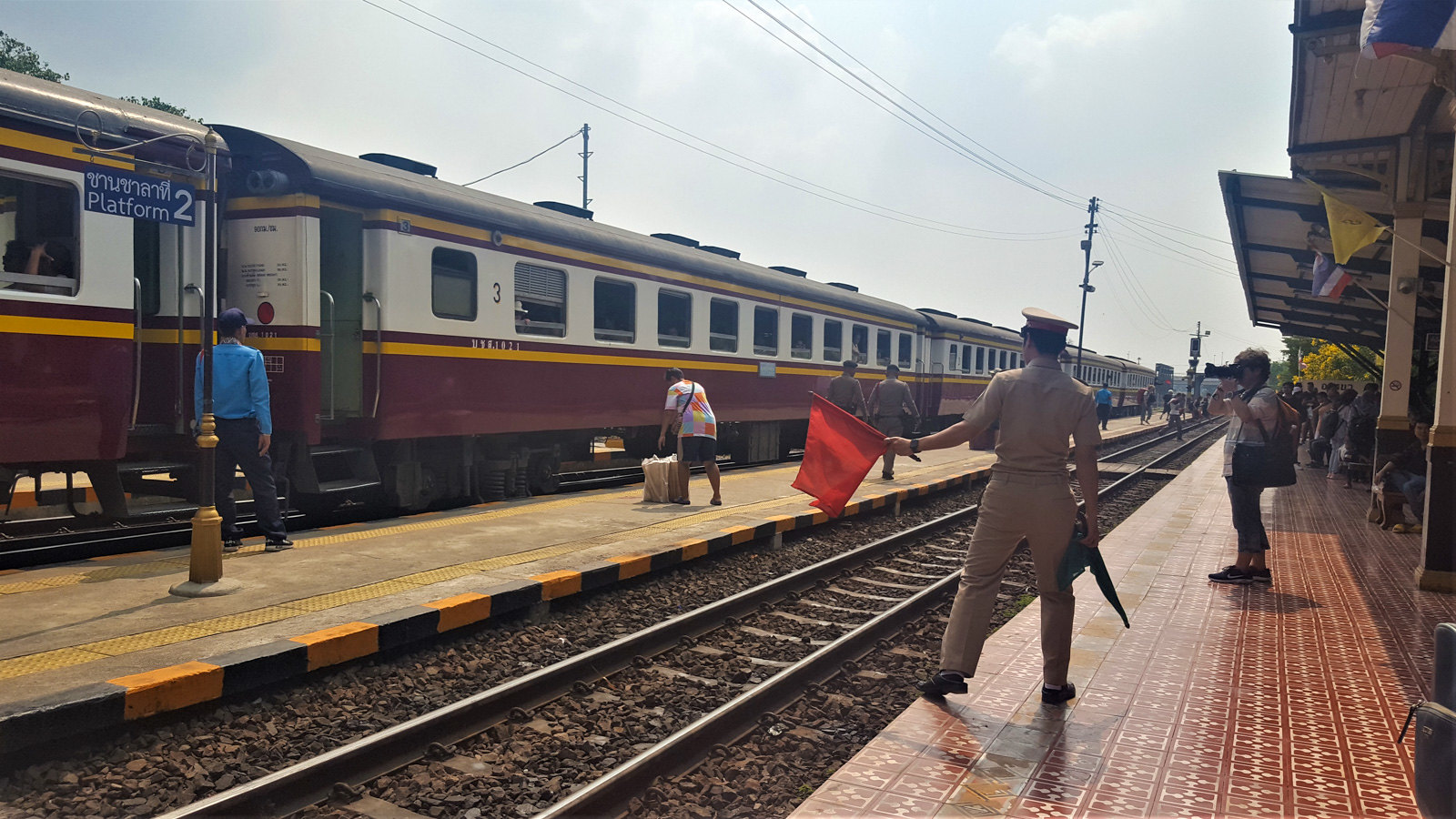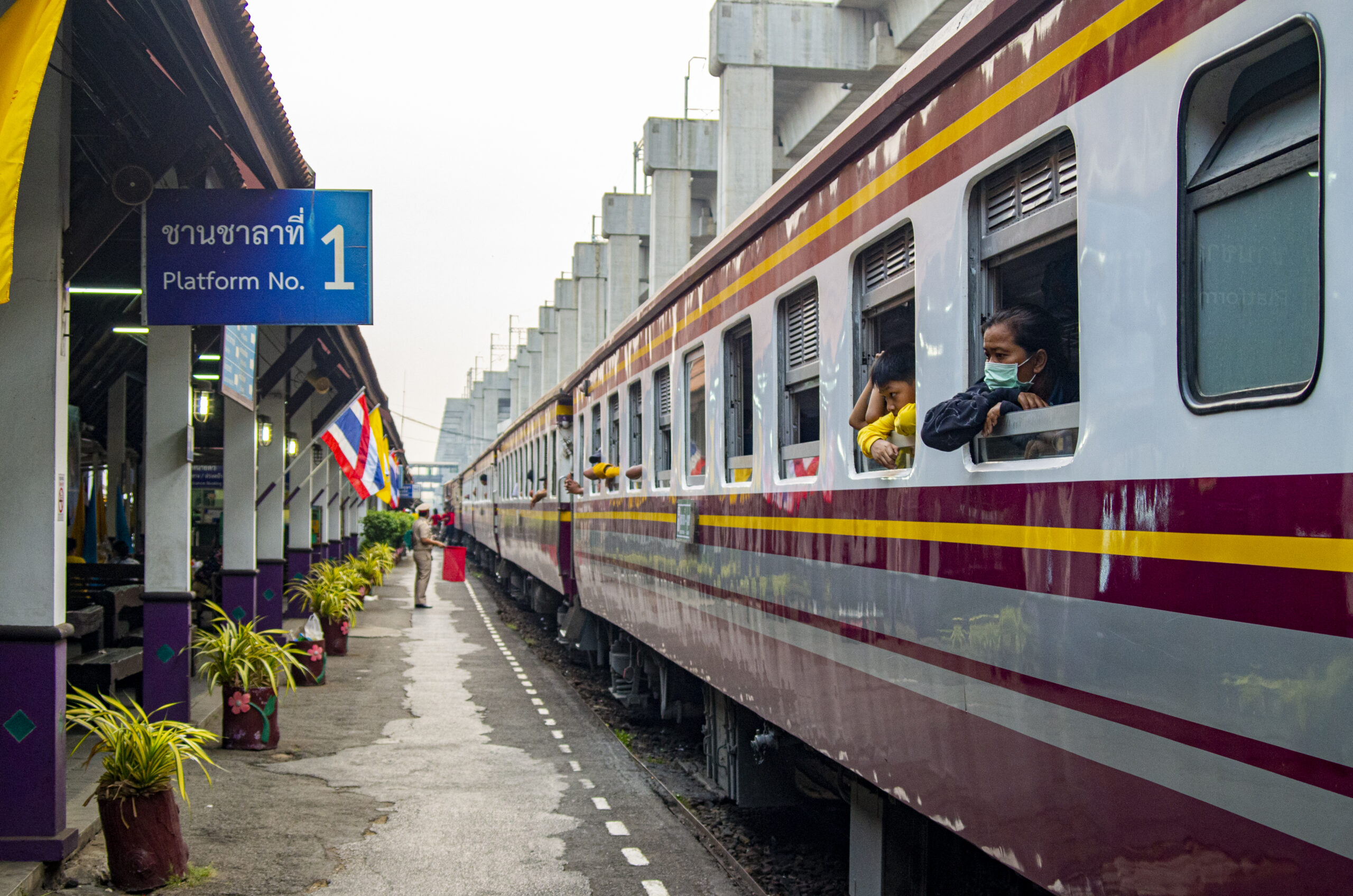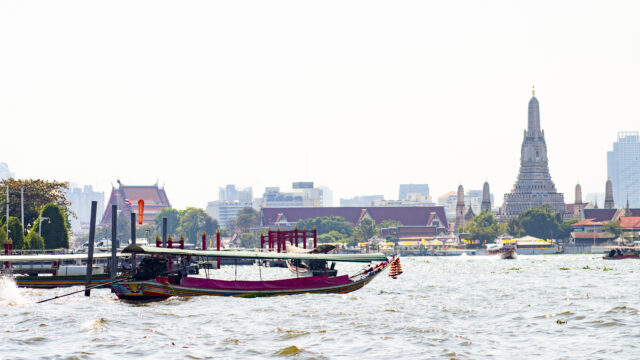Quick heads‑up, fellow travelers: Hit the Road Ket contains some affiliate links. Book through them and I earn a small commission at no extra cost to you – fueling my caffeine fix and future travels!
Public transport is more or less developed in many parts of Thailand.
Trains in Thailand
Train system covers parts of the country. You can travel north to Chiang Mai or south to Trang by trains. This can be quite cheap means of transportation (for instance, a ticket from Bangkok to Ayutthaya costs 15 baht).
The trains are more or less ok. In most cases you get the fans, which help little. The seats are not allocated in the 3rd class, so you sit, wherever you find a seat or stand, if not finding a place. It’s all right, when the train moves and the air moves, but if it makes a lot of stops and goes slowly, then you will feel suffocated. We took these trains to Ayutthaya, it was delayed by about 45 minutes on the way there. On the way back it didn’t make too many stops, but then got stuck at a couple of them and we waited for 10-15 minutes each time for it to move. Overall, trains can be ok option to travel, but not too comfortable for sure.

Trains heading to north to Ayutthaya and all the way to Chiang Mai, as well as the ones going to south to Surat Thani, leave from Hua Lamphong station in Bangkok. The station is easily accessible by MRT.
Buses in Thailand
Buses can sometimes be more convenient, than trains. That is quite a strange thing to say, as I usually prefer trains. There a number of direct buses to many destinations and you can choose air conditioned most of the time, which is a necessity in the heat of Thailand. However, due to traffic, they may take a long time to get to their destination.
In Bangkok, to take buses, you will need to find the correct bus station for each direction:
- Buses from Bangkok to North – Ayutthaya and Chiang Mai leave from Mo Chit bus station. You can get to this bus station by getting to Chatuchak on MRT or Mo Chit on BTS and taking a bus from there. As far as I know, these buses get there: 96, 104, 134, 136, 138, 145, 517. Buses from Bangkok to Chiang Mai take about 12 hours.
- Buses leaving from Bangkok to South depart from the Southern terminal, which is not too easy to get to. You will need to get to the closest MRT stop and then take a bus. I can’t advice on this, as I haven’t been there.
- Buses from Bangkok to Pattaya depart from the Ekkamai bus station, which is very near BTS stop and convenient.
There are also numerous mini-buses, which drive on shorter distances, like Bangkok to Ayutthaya, Bangkok to Pattaya, etc. Although they can get you to your destination faster, they can be quite dangerous.
Water Transport
There are a number of ferries in the South of Thailand linking major destinations, like Phuket to Phi Phi, Krabi to Phuket, etc. These are cheaper option to get to your destination, than the longtail boats. For the smaller islands, with no relevant ports, the longtail boats are the main means of transportation.

Flights
The fastest means of transportation are, of course, flights. Domestic flights are extremely cheap in Thailand, especially if you get your tickets in advance. AirAsia and Nok Air are the cheap options, but if you have more than 7 kilos of luggage, do buy the checked in baggage in advance, as the fees at the airport can be crazy. We flew with AirAsia and it was quite easy and comfortable.
How to Get from Don Mueang Airport to the City
The most convenient way to get to Don Mueang are the busses. Bus A1 goes to Mo chit BTS and Chatuchak MRT stations, from there you can easily connect to transport heading anywhere in the city. The bus takes no more than 20 minutes and is air conditioned. It takes toll roads from the airport, so it doesn’t get stuck in traffic. Buses run every 10-15 minutes. So I highly recommend this option.
There are also other buses – bus A2 gets to Victory monument, bus A4 – to the back-packers’ beloved Khao San road. but these buses travel through the city, which may be highly affected by traffic. So taking a bus from Chatuchak is the best option to avoid delays.
How to Get from Suvarnabhumi Airport to the City
The airport link is very convenient for getting to Suvarnabhumi (I still break my tongue by trying to say this name 😊) airport. It has separate tickets, than MRT and BTS. It costs about 30-40 baht depending, which stop you are going to and takes about half an hour to 40 minutes to get to the main stops. At Makassan, you can change for MRT Petchaburi, at Phaya Thai, you can change to BTS station of the same name.
Transport in Bangkok
Rail System in Bangkok
There are three main systems in Bangkok: the MRT (underground lines), BTS Skytrain (which runs overground) and the Airport rail link. All of these are independent systems and you can’t get one ticket or card for all of them unfortunately.
- For BTS you can buy the so-called Rabbit card, which can be charged in advance and used for multiple journeys. You can also buy the one-time travel cards from the officer or from machines.
- Similarly, for MRT, you can buy an MRT plus card or the one-time tickets, which are coins basically. The rides are not very cheap. The cheapest you pay is 16 baht, which is for 1 stop and it adds up, depending how far you are going.
- The airport link costs about 30-40 baht depending, which stop you are going to and takes about half an hour to 40 minutes to get to the airport.
They have been planning to introduce one card for all systems, however, this still hasn’t happened. We did buy MRT card, as we stayed at the hotel nearby one of the stations and were using this system more often than BTS. For BTS, we used the single tickets.
Buses in Bangkok
Bangkok also has numerous buses, but we didn’t try using them, as the rail systems got to most places we wanted to go to and buses can be a slow and uncomfortable affair. We have seen quite a lot of very old buses in the city.

River Transport in Bangkok
Chao Phraya river has numerous ferries and smaller boats. There are also boats on the many canals of the city.
Water ferries are a great way to see nice views, we took them a couple of times. They cost appr. 15-20 baht and you pay to the conductor on the ferry itself. The only exception is the ferry, which takes you across from Tha Thien to Wat Arun, which costs 4 baht and you pay before getting on the ferry.
See also:

Hello I am Ket,
A traveler, planner, and sweet tooth behind Hit the Road Ket.
Travel isn’t just my passion – it’s a lifeline for my mental health. Having lived in three cities and explored 60 countries (and counting!), I created this blog to share my experiences, smart tips, and itinerary advice with fellow travel lovers. I’m all about making the most of limited time, finding scenic routes, and turning every trip into something memorable – coffee in hand, of course.



